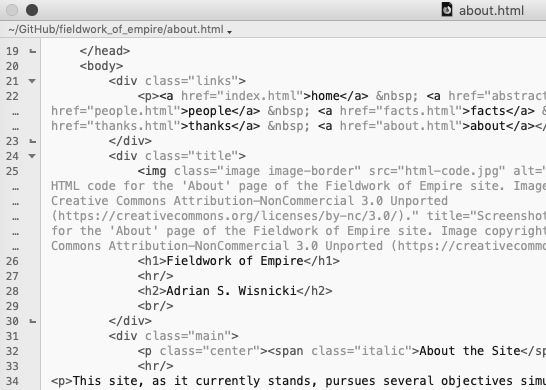About the Site
This site, as it currently stands, pursues several objectives simultaneously.
1) Most obviously, I built this site to promote my book - to encourage people to read the book and cite it in their own work. I've had a great experience working with Routledge. They believed in my vision and gave me ample scope for making the book exactly as I wanted it to be. Michelle Salyga, the editor, and Brinda Thirumoorthy, the project manager, couldn't have been more supportive. The book’s complex history was also not a problem for them. However, during our discussions about publication, I discovered that they planned for an initial print run of 110 hardback copies of the book, plus a digital edition, plus a paperback version about eighteen months after initial publication. That's not optimal, so I wondered how that publication scale might be enhanced and expanded, especially using digital means. This site represents one answer.
2) I’ve been quite interested in the work of Alex Gil, Jentry Sayers, and Roopika Risam and Susan Edwards on minimal computing, but never previously had a chance to give it my own spin. A conversation I had over Twitter with Kathy Harris and Alex Gil during MLA 2019 extended this interest.
Along related lines, my other major DH project, Livingstone Online, has a considerable footprint (c. 2 TB) and a dazzlingly complex structure (for instance, the site manual is 350+ pages), so I decided to take the best of what I learned through Livingstone Online design-wise, but to go in another direction in terms of size and structure. As a result, this site embodies my attempt to put minimal computing into practice. Put another way, in creating this site, I've tried to make something that is led by content, elegant, and simple.
3) I'm part of the Victorian Data Network and had a number of conversations at NAVSA 2018 in which I heard over and over how Victorianist colleagues found digital humanities projects intimidating because of the technical skill apparently required. I also took note of what Dino Felluga and David Rettenmaier have recently argued (in an essay forthcoming in the Journal of Victorian Culture) about putting the means of production back in the hands of scholars. So I wondered: how could I engage these points? Could I create something that made a useful critical intervention along these lines?
In general, digital humanities practice is quite collaborative. I myself have run projects with 20+ people on them. However, I made the present site on my own, with a single friend (Justin Livingstone) providing some proofing of the content here and there. I could have done it differently, but I wanted to make a point about the bare essentials.
At present, the site consists of three types of basic files: HTML, CSS, and JPEG. Scholars can gain nearly all the skills needed to develop these files via the free tutorials on CodeAcademy. I used TextWrangler, a free text-editing program (now part of BBEdit), for developing the HTML and CSS files, plus GIMP, a free image-editing program, for the JPEGs. The site is hosted for free on GitHub. I learned how to build a github.io page by Googling about it. Same for adding Google Analytics to the site pages. Finally, to illustrate the site, I selected images that are in the public domain or that could be reused on the site under a Creative Commons license.
The advantage of building the site this way – rather than using Wordpress or another CMS or even Jekyll – is that the structure is truly bare bones and everything looks exactly as I wanted it to. Plus the site is now a resource that others, especially those with minimal technical skills, can reuse for their own work. I've published all the code under a Creative Commons license. For anyone interested, it's just a matter of pulling down the CSS file for the site and one of my HTML files (all of these have the same underlying code structure), then replacing my content and/or adjusting my code. Incidentally, the site is fully mobile-enabled, since I built the mobile version first, then scaled up.
Bonus: Download the constitutive parts of the website poster that I presented at the Victorian Data Network Conference on 16 November 2019 in either PDF or PPTX form.
4) I’m just now (early 2019) in the process of developing a new digital humanities project on the British Empire called One More Voice. This new project, an offshoot of Livingstone Online, seeks to recover narratives of travel and other related contributions by non-western populations and individuals to the written record of historical British travel in Africa. As a means to developing that project, I thought it might be useful to use the present site to prototype and experiment with what I planned to do later, on a larger scale. Since the data on the present site is quite controlled (baseline data related to a single book, my book), this site also offers the chance to test out some of the technological approaches I might later use for One More Voice.
*
Those are my objectives in building this site. I'd love to hear your thoughts about them, about the site, and/or anything else relevant, so please feel free to drop me a note. There’s always room to grow, and what good is a conversation if it’s just one person?
